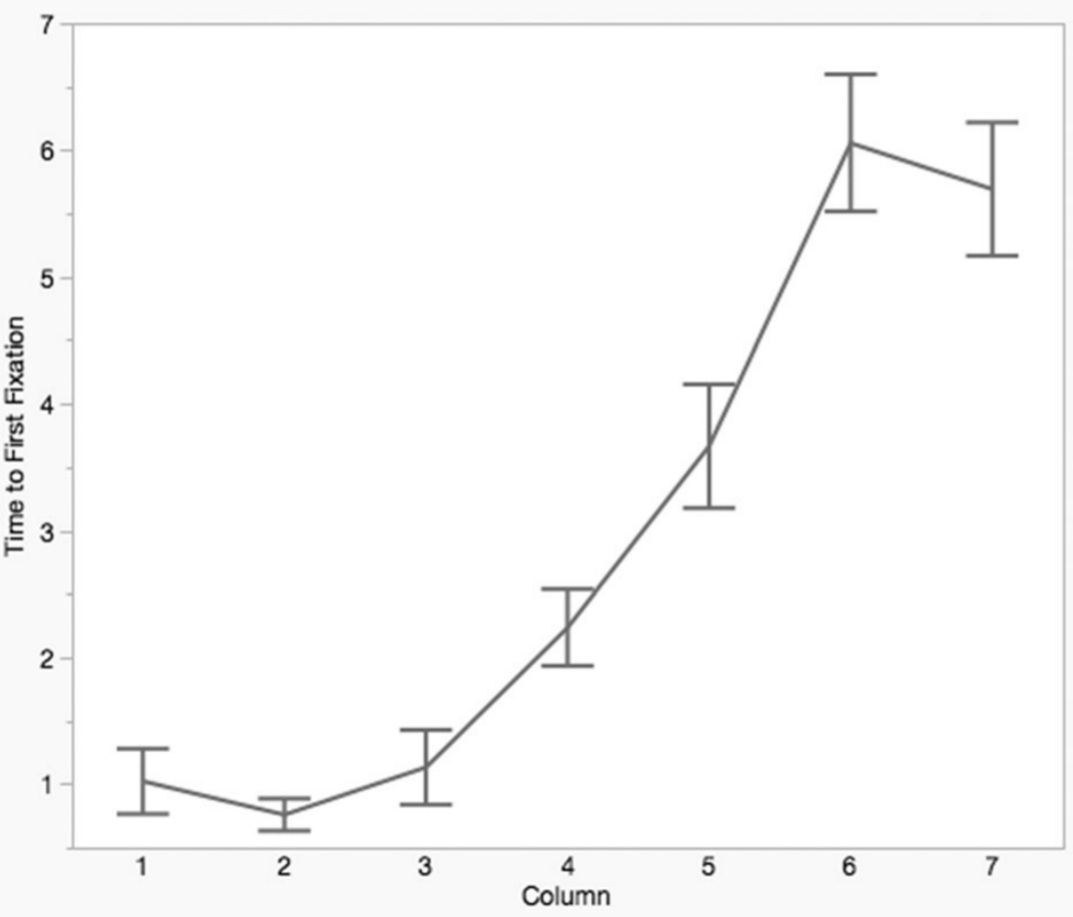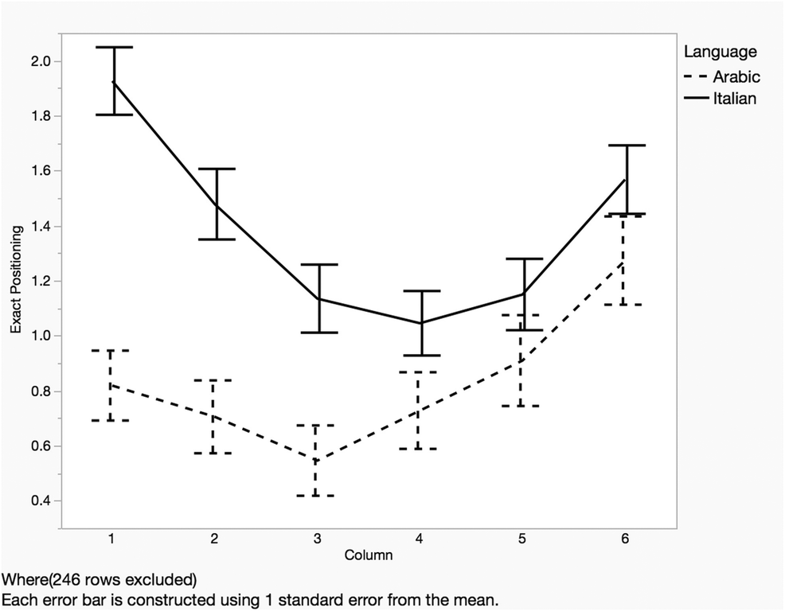How many U.S. presidents can you name? (Apologies to our international audience.) Regardless of how many you can recall, I would bet that among the ones you did remember are Washington, Adams, Jefferson, Trump, Obama, and Bush. I would also bet that among the ones you did not remember are McKinley, Hoover, and Cleveland. Don’t worry. You’re not alone.
These memory effects, called the primacy and recency effect, are among the most, well, memorable cognitive psychological findings. Across a number of situations, the first few items (primacy) and last few items (recency) one has encountered tend to be remembered better than anything in the middle (sorry James Garfield).
Usually, primacy and recency effects are studied in the contexts of remembering lists of digits or words (or presidents), meaning they are temporal in nature—the first and last items encountered. In these cases, the primacy effect is often stronger than the recency effect (especially if items must be recalled in order). The first several items tend to be remembered better, and so are the last one or two items. But researchers have paid little attention to spatial primacy and recency effects; that is, the effect of an item’s position along a spatial dimension (though see here for an exception). This is a fairly important omission in light of the fact that reading text requires scanning words in a specific direction, depending on the language.
Reading direction (left-to-right, LTR, for English and most Western-language speakers; right-to-left, RTL, for Arabic, Hebrew, and others) relates to performance on a variety of cognitive tasks. For instance, LTR language speakers tend to represent things earlier in time and smaller numbers as being further to the left compared to the things later in time and larger numbers. The reverse holds for RTL language speakers. And on this blog, we discussed research relating reading direction to updating a string of letters in working memory, comparing Hebrew and English. But, could reading direction also relate to how things are recalled from memory?
A recent paper in Memory & Cognition by Bettinsoli, Maass, and Suitner investigated whether reading direction related to consistent asymmetries in memory for spatial positions. To do so, in a series of studies, Bettinsoli and colleagues presented the images below to samples of Italian (an LTR language) and Arabic (an RTL language) speakers.

First, Bettinsoli and colleagues wanted to establish that Italian speakers would follow the pattern established by their reading direction—that they would begin scanning the image from left to right. The researchers thus collected eye-tracking data while participants attempted to memorize the display. It was found that Italian speakers would look first—and for the longest time—at the left-most column.
As can be seen in the time-to-fixation below (which is the time until the participant first fixated on that column), participants appeared to scan the array from left-to-right, as if they were reading it.

So, participants who speak a LTR language look at the left images first, as if they were reading them. But did they show primacy and recency effect for looking at these images first (or last)? Yes! Italian speakers were better able to position the images in the first column in the correct position, and slightly better able to position the images in the last column in the correct position.
To really test whether reading direction could influence how participants scan the items, Bettinsoli and colleagues collected data from an additional set of Italian speakers as well as a set of Arabic speakers. If their hypothesis is correct, Arabic speakers should scan the images on the right first. Because the primacy effect tends to be stronger than the recency effect, Arabic speakers should show greater memory for the right-most items; whereas Italian speakers should show greater memory for the left-most items.
Below, you can see the data they collected from Italian and Arabic speakers (excluding Arabic speakers who had spent a substantial amount of time in a LTR language country, like Italy or France).

Following the solid line from left-to-right (as a native English speaker would!), we can see that the Italian speakers are most accurate for the left-most column, with performance dropping off through the middle, and increasing again at the end. A classic U-shaped primacy/recency curve. Following the dotted black line, we can see the opposite trend for the Arabic speakers. They tend to be best at the right-most column, and fall off toward the middle, only to rise more modestly at the left.
Although Bettinsoli and colleagues could not collect eye-tracking data for any subjects in this second study, it stands to reason that the natural strategy for participants in scanning a set of images is to start wherever they tend to start when reading text. This scanning pattern yields predictable asymmetries in memory, as evidenced by the primacy and recency effects.
One critical caveat here is that reading direction is correlated with a whole host of additional cultural and sociological variables that are not captured across Italian and Arabic speakers. Thus, it could be that scanning direction is an artifact of some other cultural factor that privileges right over left or vice versa. Another is that the images used in this study are relatively small-scale, approximately of the same scale that one might encounter in a book or on a poster. It remains to be seen whether these biases would occur in the larger-scale environment of navigable space.
Nevertheless, these experiments build up a compelling connection between the way that reading subtly influences the way we naturally and actively perceive the world. Decades of reading entrain our gaze and motor programs to scan our environment in ways that change how our cognitive systems process and retain information. As citizens of the world, it is worth remembering that we all, literally, see the world quite differently.
Reference for the article discussed in this post:
Bettinsoli, M.L., Maass, A., & Suitner, C. (2018). The first, the least and the last: Spatial asymmetries in memory and their relation to script trajectory. Memory & Cognition. DOI:10.3758/s13421-018-0861-1.
